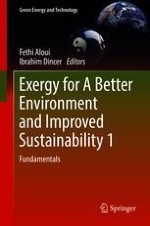2018 | OriginalPaper | Chapter
Secondary Migration of Fang Crude Petroleum Related to Volumetric Flow Rate
Authors : Kaewku Cheranun, Promkotra Sarunya
Published in: Exergy for A Better Environment and Improved Sustainability 1
Publisher: Springer International Publishing
Activate our intelligent search to find suitable subject content or patents.
Select sections of text to find matching patents with Artificial Intelligence. powered by
Select sections of text to find additional relevant content using AI-assisted search. powered by
